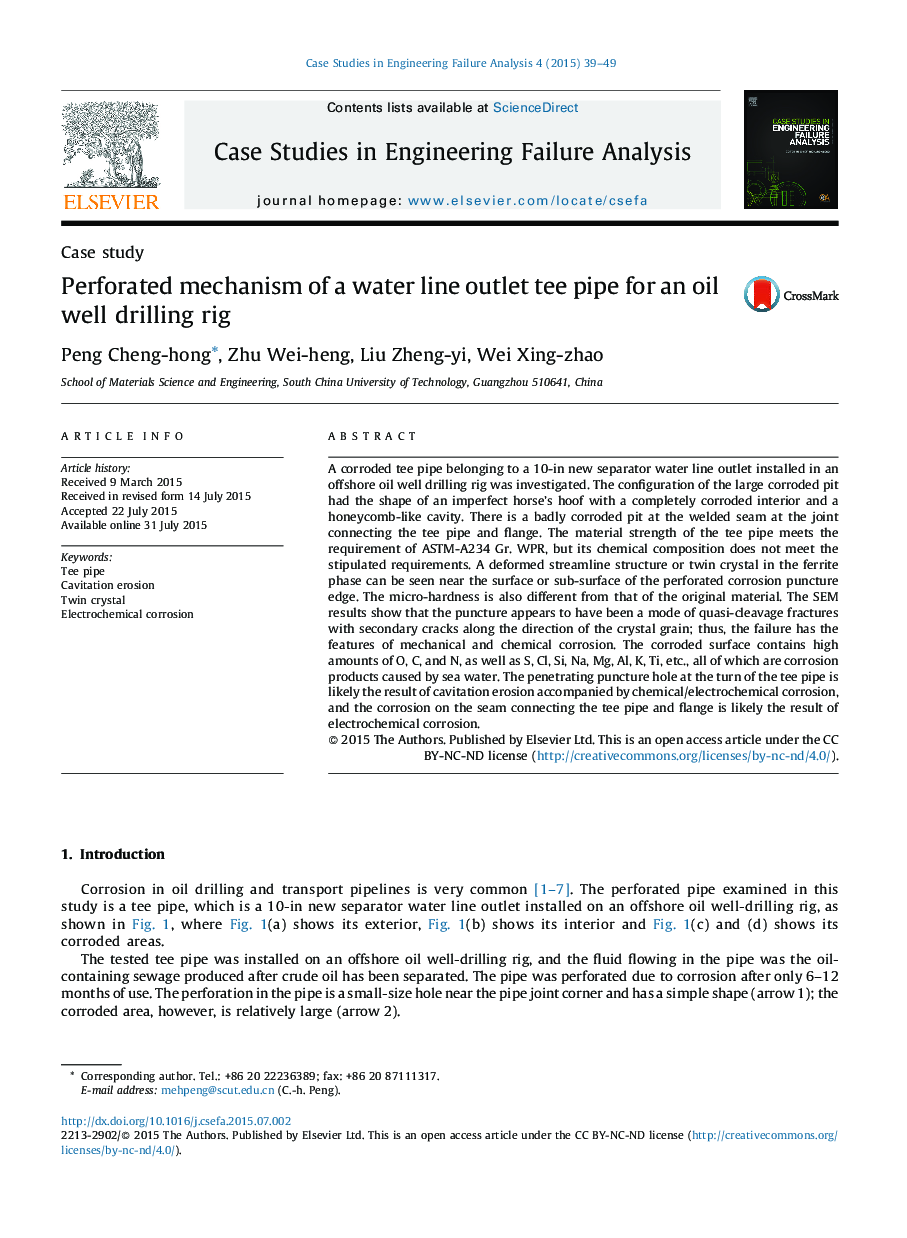| کد مقاله | کد نشریه | سال انتشار | مقاله انگلیسی | نسخه تمام متن |
|---|---|---|---|---|
| 756941 | 1462461 | 2015 | 11 صفحه PDF | دانلود رایگان |
• The configuration of the big corroded pit looks like an imperfect “horse hoof”. There is characteristic of bubble-caused erosion and turbulence erosion.
• “Deformed streamline structure” or twin crystal in the ferrite phase are observed on corroded cavity edge, these are strong evidences of cavitations erosion.
• The micro-hardness change of corroded cavity edge is another strong evidence of cavitations erosion.
• Metallographic and SEM analyses revealed the corroded pipe also caused by electrochemical corrosion, include alternative electrochemical corrosion. The corrosion mechanism combined both mechanical and chemical actions.
A corroded tee pipe belonging to a 10-in new separator water line outlet installed in an offshore oil well drilling rig was investigated. The configuration of the large corroded pit had the shape of an imperfect horse's hoof with a completely corroded interior and a honeycomb-like cavity. There is a badly corroded pit at the welded seam at the joint connecting the tee pipe and flange. The material strength of the tee pipe meets the requirement of ASTM-A234 Gr. WPR, but its chemical composition does not meet the stipulated requirements. A deformed streamline structure or twin crystal in the ferrite phase can be seen near the surface or sub-surface of the perforated corrosion puncture edge. The micro-hardness is also different from that of the original material. The SEM results show that the puncture appears to have been a mode of quasi-cleavage fractures with secondary cracks along the direction of the crystal grain; thus, the failure has the features of mechanical and chemical corrosion. The corroded surface contains high amounts of O, C, and N, as well as S, Cl, Si, Na, Mg, Al, K, Ti, etc., all of which are corrosion products caused by sea water. The penetrating puncture hole at the turn of the tee pipe is likely the result of cavitation erosion accompanied by chemical/electrochemical corrosion, and the corrosion on the seam connecting the tee pipe and flange is likely the result of electrochemical corrosion.
Journal: Case Studies in Engineering Failure Analysis - Volume 4, October 2015, Pages 39–49
